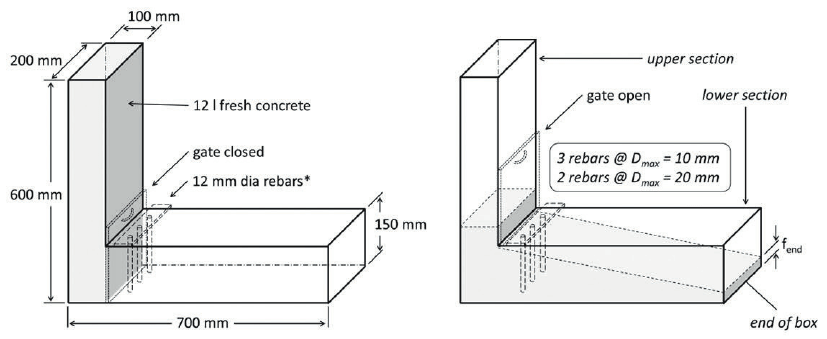Table of Contents
In this article, we will discuss the L Box Test on Concrete.
1. Introduction
A slump test is commonly utilized to determine the workability of fresh concrete.
Bee Vee Test, Cally Ball Test, Flow Table Test, etc are other tests used for determining the workability of fresh concrete but they are not suitable for concrete with high fluidity.
Self-compacting concrete is an example of high fluidity concrete that is used underwater and compaction is not possible underwater as well as reinforcement is congested.
Hence, L Box Test is utilized to determine the flow and passing ability of self-consolidating/compacting concrete (SCC).
L box test is based on a Japanese design code for underwater concrete, has been well described by Peterson.
This test can be carried out at the lab or site.
The price of the L-Box testing apparatus ranges between $600 to $1000 based on quality.
2. Apparatus for L Box Test
Some apparatus required for the L Box Test are:
a. L box of a stiff non-absorbing material
b. Trowel
c. Scoop
d. Stopwatch
e. Spirit Level
f. Measuring Scale

3. Procedure
The L box should be made dust and impurities free and then application of dampness inside the box is done.
1. Level the apparatus with the help of spirit level.
2. Now, fill the concrete on the vertical hooper up to the top and level it with the help of a trowel.
3. Leave the concrete for 1 minute, open the gate, and permit the concrete to flow from vertical to move horizontally.
4. When the concrete is completed, measure the height of the concrete settlement in horizontal and vertical portions of the box.
5. Take meassurement at 3 places in both sections.
6. Average depth of the upright portion is noted as H1 and the average depth of horizontal portion as H2.
4. Calculation
The concrete passing is the ratio of concrete depth of horizontal and vertical portion.
Concrete passing ratio = H2/H1
5. Result
The blocking ratio of self-compacting concrete is generally taken between 0.8 and 0.85.
| Read More: U Box Test on Fresh Concrete |
| Read More: Self Healing Concrete |

